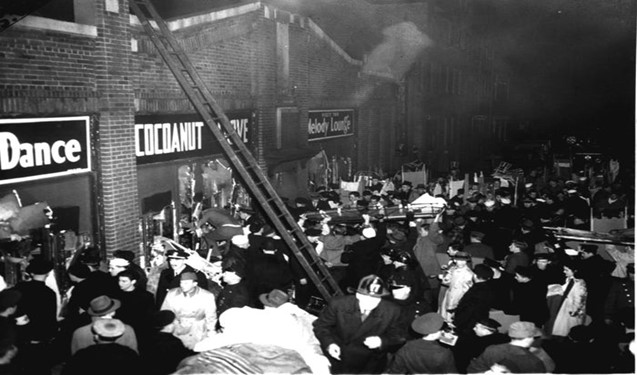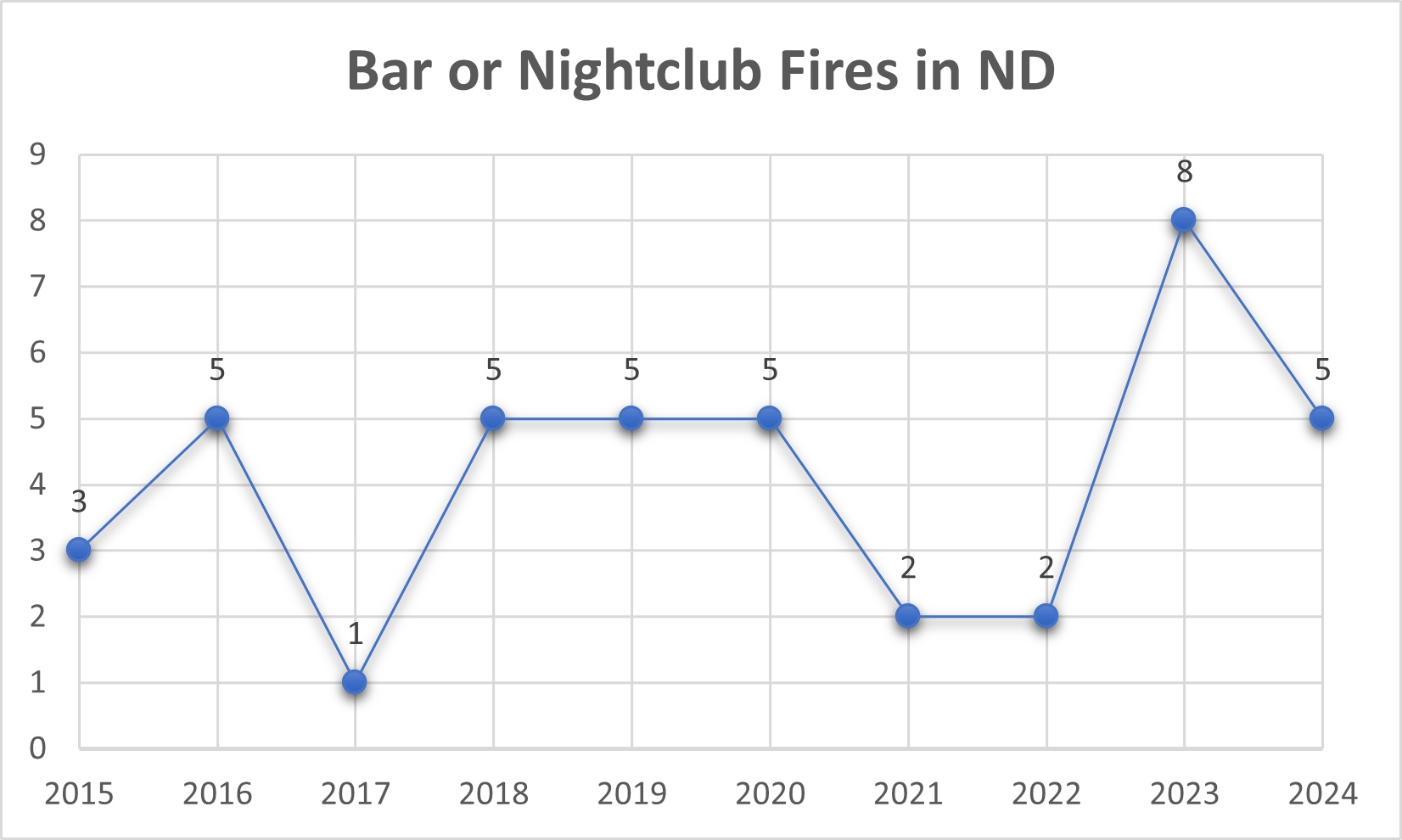
AP Photo
By Kirstin Greaney-Stanger, Deputy Fire Marshal
The fire code today was shaped by events of the past and unfortunately many of those past events had catastrophic endings. One of those events was the Cocoanut Grove nightclub fire in Boston, Massachusetts, which occurred on November 28, 1942.
There have been sixty-six nightclub or bar fires across the world between 1929-2025, resulting in multiple casualties. The last recorded nightclub fire in the United States was in 2016.
The Cocoanut Grove nightclub fire had been identified as the deadliest nightclub fire in the United States and the worst in the world for confirmed fatalities. The Cocoanut Grove nightclub fire brought many changes to the Boston building and permitting codes along with changes to the International Fire Code. This article we only address the areas that modeled the fire code we have today.
The Cocoanut Grove Nightclub
The nightclub was opened in 1927 as a one and a half story complex. Cocoanut Grove was converted from a brick and concrete garage and warehouse complex into an elaborate combination of dining rooms, bars, and lounges.The Cocoanut Grove was decorated to resemble a topical paradise. The décor consisted of leatherette, rattan and bamboo coverings on the walls, heavy draperies, and dark blue satin canopies and coverings on the ceiling. Support columns in the main dining area were designed to look like palm trees with light fixtures to look like coconuts. This theme also continued into the basement Melody Lounge. The main entrance for the Cocoanut Grove was a revolving door located off of Piedmont Street.
On the day of the fire, it was reported that the Cocoanut Grove was overcrowded with an estimated number of patrons exceeding 1000. At about 10:15 p.m., on November 28, 1942, a busboy lit a match in the poorly lit Melody Lounge located in the basement to fix a lightbulb at the top of an artificial palm tree. A short time later the palm tree had burst into flames, the bartenders attempted to extinguish the fire with water and removed the decorations from the wall. However, the fire spread rapidly from the Melody Lounge to the dining room on the main level by the decorative materials on the walls and ceiling. Within eight minutes of the fire being reported, the building was fully engulfed in flames. As the patrons attempted to flee the fire they were met with locked or inaccessible emergency exits. The turn style main entrance became blocked from people as they attempted to flee. The Boston Fire Department immediately requested a fifth alarm upon arrival, as well as resources from the Navy to rescue and transport people to the hospitals. Once the fire was extinguished, a total of 492 people had died and 166 people were injured. Investigations determined multiple contributing factors, including corruption, lack of code enforcement, poor lighting, unmarked emergency exits, blocked or inaccessible emergency exits, and the highly flammable decorations on the walls and ceilings.
Code Changes That Prevent Future Tragedies
Today the International Fire Code includes several sections meant to prevent a tragedy like this from happening again:
- Section 807.2 Combustible Decorative Materials.
- “Fabric hangings and other similar combustible decorative materials suspended from walls or ceilings shall comply with Section 807.3 and shall not exceed 10% of the specific wall or ceiling areas the materials are attached to.
- Section 807.4 Artificial Decorative Vegetation.
- Artificial decorative vegetation shall comply with this section and the requirements of section 806.2 (Obstruction of means of egress) and 806.3 (Open flame).
- Section 1004 Occupant Load
- This section is used to determine the buildings max occupant load which is needed in other sections in chapter 10 to determine the appropriate means of egress in areas such as
- Total number of exits
- Maximum exit pathway
- The number of stairs cases needed or width of staircase for the evacuation of occupants from floors below or above the floor of exit discharge.
- This section is used to determine the buildings max occupant load which is needed in other sections in chapter 10 to determine the appropriate means of egress in areas such as
- 1013.1 Where required.
- Exits and exit access doors shall be marked by an approved exit sign readily visible from any direction of egress travel.
If you or your department needs assistance with risk reduction strategies or have code-related questions, please feel free to reach out to the North Dakota State Fire Marshal’s office and we’ll be happy to help you.
Sources used for the Cocoanut Gove Nightclub fire:
- https://www.archives.gov/publications/prologue/2017/fall/cocoanut-grove
- https://bostonfirehistory.org/the-story-of-the-cocoanut-grove-fire/
- https://en.wikipedia.org/wiki/Cocoanut_Grove_fire
- https://en.wikipedia.org/wiki/List_of_nightclub_fires


